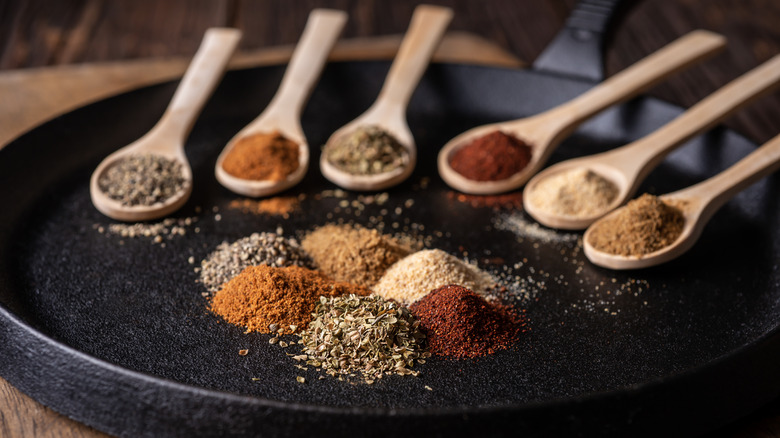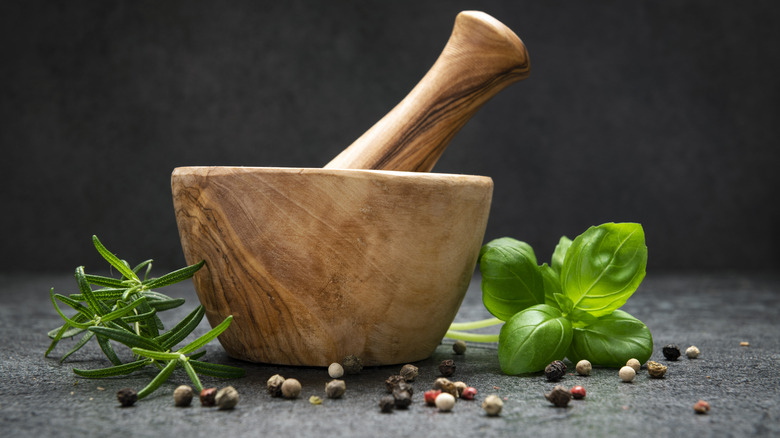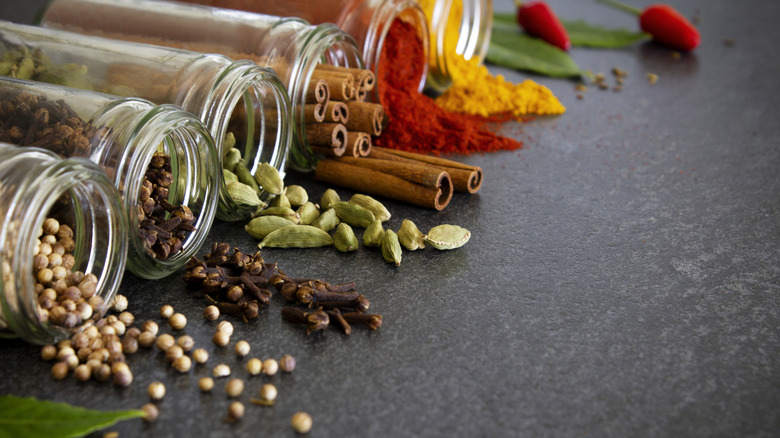What To Do If You Don't Have A Mortar And Pestle For A Recipe
Using freshly ground spices in cooking will add a ton of flavor to any dish. While it's common to purchase pre-ground spices from the grocery store — and these are good to keep on hand if you need flavor in a pinch — nothing beats the aromatics that come from spices that have been freshly ground. That powerful flavor within a spice is due to its oils, and when spices are whole, those oils aren't exposed to air; this keeps the flavor at its maximum. However, the moment those spices are ground and the oils meet the air, they start to lose their intensity.
A mortar and pestle is a common way to grind spices. It consists of a large bowl, known as a mortar, and a heavy, club shaped stick called a pestle; these are often made of stone or ceramic, giving them plenty of strength to crush and grind spices. While they can easily be purchased online, if you have never come across this tool before and are making a dish that calls for one, there are plenty of solutions for grinding spices sans pestle — including using other heavy objects like a rolling pin or wine bottle.
The best methods for grinding spices
If you don't have a mortar and pestle, you don't have to settle for purchasing pre-ground spices. The point of this tool is to crush the spices with a hard object against a hard surface. However, you can easily recreate this using a sturdy cutting board and a rolling pin. To prevent a mess, place some parchment paper on the cutting board, then add the whole spices, then another sheet of parchment paper; this will help to prevent the spices from launching everywhere when you hit them. Next, take the rolling pin and crush the spices by hitting it against the cutting board. Once they're crushed, you can also roll the rolling pin over top of the spices to grind them even further.
Other objects will work here, too, including a meat mallet or even a wine bottle. If using a meat mallet, make sure to use the flat side and not the sharp side, or the mallet will puncture the paper, and the spices will get stuck in the crevices. If using a wine bottle, use the thicker bottom of the bottle for the crushing before turning it on its side and rolling it, and be gentle to ensure you don't break the glass.
You can also grind spices in a blender
The caveat to crushing spices with a rolling pin or meat mallet is you might not get them quite as fine as you would like. Plus, there is a lot more elbow grease that goes into that method. If you have access to a blender or food processor, however, you can also use one of these to grind spices. Of course, a spice grinder would work, too.
The downside to the blender method is that blenders are often pretty large and have blades that would only work with a certain amount of volume. If you only plan to grind a tablespoon of fresh spices, the blender is likely too big. The food processor would work better here, but that's assuming you have one that's good for smaller volumes. A coffee grinder works the same way as a spice grinder, so if you have one of these, it's worth trying as well.
Once you find the best method for your spices, you can keep them for years. Although they start to lose their oils right away, they'll stay suitable for use for up to three years if they're properly stored at room temperature.


